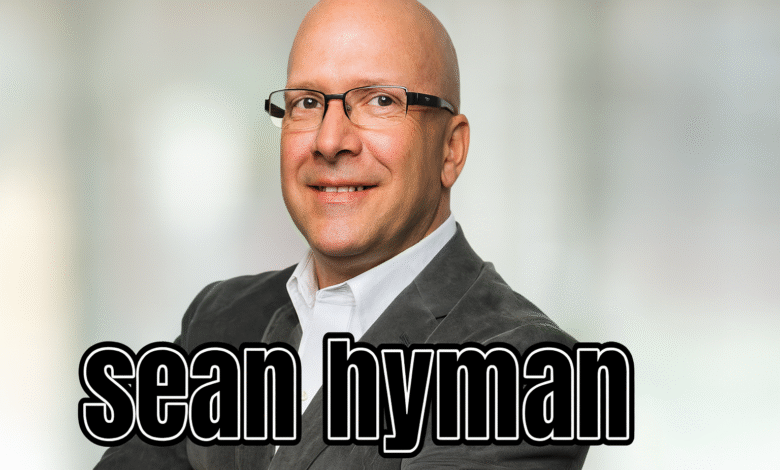sean hyman: The Influential Market Analyst Transforming Financial Education

Introduction
Sean Hyman is widely recognized as a seasoned American financial analyst, market commentator, and investment-newsletter editor known for simplifying complex market strategies for everyday investors. With more than two decades of real-world market exposure, he has built a strong reputation for practical financial insights, long-term value-based strategies, and accessible investment education. His professional journey—spanning stockbroking, forex analysis, and financial writing—reflects determination, discipline, and a commitment to empowering retail investors with clear, ethical, and actionable market guidance.
Over the years, Sean Hyman has demonstrated both positive strengths, such as clarity and transparency, and the natural challenges faced by public financial educators, such as criticism from skeptics or disagreements over market predictions. Still, his consistent voice in the investment world continues to make him an influential figure.
Quick Bio (Table)
| Field | Details |
|---|---|
| Full Name | Sean Hyman |
| Profession | Financial Analyst, Investment Writer, Newsletter Editor |
| Nationality | American |
| Residence | Dallas, Texas, USA |
| Known For | The Logical Investor newsletter, value-driven investment education |
| Early Life | Grew up in a small Arkansas town |
| Career Start | Began as a stockbroker at Charles Schwab |
| Major Expertise | Stocks, commodities, forex, value-based investing |
| Media Presence | Featured in financial commentary and investment discussions |
sean hyman Career Overview
Early Life and Foundations
Sean Hyman grew up in a modest environment in Arkansas, where financial struggles shaped his understanding of money, discipline, and long-term planning. His early experiences taught him the importance of financial literacy, a theme that later became central to his work. This background also helped him relate to ordinary investors seeking guidance without overly technical jargon.
In his early adulthood, Hyman became deeply interested in financial markets. Even without pursuing a traditional college pathway, he taught himself market fundamentals, studied economic behavior, and committed to learning real-world investment strategies. This self-driven approach ultimately led him into the heart of the financial sector.
Professional Beginning at Charles Schwab
Sean Hyman entered the financial world as a stockbroker at Charles Schwab & Co., one of the most respected brokerage firms in the United States. The role gave him critical exposure to stock market operations, investor psychology, and financial advisory practices. He later advanced to managing responsibilities, gaining hands-on experience in client relations and market behavior during both stable and volatile periods.
Working directly with investors also strengthened his ability to translate complex financial movements into clear, actionable insights—a skill that would define his future career in financial writing.
Transition into Forex and Market Analysis
After gaining extensive stock market experience, Hyman expanded into foreign-exchange trading with FXCM. This phase sharpened his understanding of global currencies, commodities, and macroeconomic forces. His ability to break down international market patterns made him a sought-after analyst for individuals wanting a broader understanding of global financial dynamics.
Through forex and commodities, he developed a value-driven perspective: identifying overlooked opportunities while avoiding emotional or trend-chasing strategies.
Becoming a Public Market Educator
Sean Hyman eventually shifted into a new role—investment writer and newsletter editor. He began producing analysis, buy/sell recommendations, and long-term investment strategies for retail investors. His most recognized work is The Logical Investor, a newsletter designed to help investors make intelligent decisions using simplified principles rooted in value investing.
Over time, Hyman became known for:
-
Clear explanations
-
Long-term investment thinking
-
Avoidance of hype-driven market behavior
-
Consistency in educating everyday investors
This public-facing role also brought both praise and criticism. Supporters value his transparency and grounded market outlook, while some critics challenge his interpretations during market volatility—an experience familiar to many public analysts.
Media Presence and Public Influence
Sean Hyman’s expertise has led to widespread recognition. He has been featured in financial commentary segments, investment discussions, and market analysis platforms where he shares insights about stocks, currencies, economic indicators, and investor behavior.
His communication style—calm, structured, and educational—has helped thousands of readers and viewers understand markets with greater confidence.
sean hyman Investment Philosophy
Value-Driven Strategy
Hyman strongly emphasizes value investing, focusing on identifying fundamentally strong opportunities rather than following market fads. He teaches investors to evaluate a company’s intrinsic strength instead of short-term price movements.
Education Before Execution
A central pillar in his philosophy is investor education. He encourages readers to understand what they invest in rather than blindly following trends. His mission is to empower individuals with long-term financial tools that protect them in different market cycles.
Business Activities and Sources of Income
Newsletter Publishing
The Logical Investor remains his primary professional venture, offering:
-
Market insights
-
Stock recommendations
-
Portfolio strategies
-
Educational breakdowns of economic trends
Market Analysis and Trading
Beyond writing, Hyman applies his financial knowledge through independent trading and market study—strengthening his understanding of global market behavior.
Latest Updates
Sean Hyman continues to operate as an active financial educator, regularly producing market commentary and investment guidance for his newsletter subscribers. His focus remains on helping everyday investors approach markets with clarity, patience, and confidence.
Conclusion
Sean Hyman’s journey from a small Arkansas town to becoming a respected financial analyst showcases resilience, discipline, and self-driven learning. Through his work as a market commentator and newsletter editor, he has empowered thousands of individuals to approach investing with a long-term, value-oriented mindset. His career reflects both inspiration and realism—showing that success in finance comes not only from technical expertise but also from patience, clarity, and serving the needs of everyday investors.
FAQs
1. Who is Sean Hyman?
Sean Hyman is an American financial analyst, investment writer, and editor known for his value-driven market insights.
2. What is Sean Hyman known for?
He is best known for The Logical Investor newsletter and his clear, long-term approach to investment education.
3. Where is Sean Hyman based?
He is based in the Dallas, Texas area.
4. How did Sean Hyman start his career?
He began as a stockbroker at Charles Schwab, later expanding into forex analysis and investment writing.
5. What is his investment approach?
His philosophy centers on value investing, financial education, and avoiding emotional market decisions.



